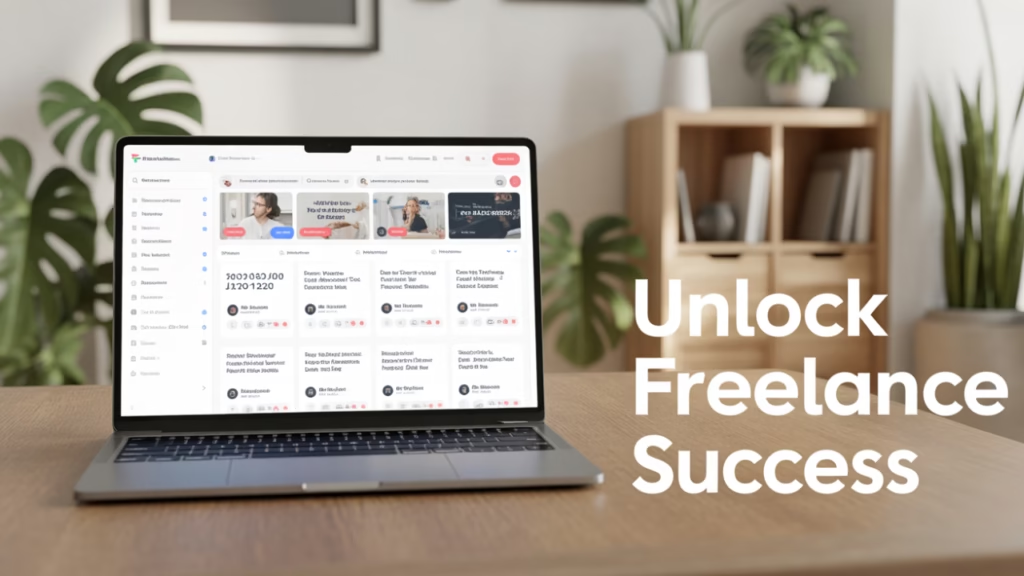Being a successful freelance web designer starts with mastering your craft. It’s essential to have a solid grasp of design principles, user experience (UX), and the latest technologies. Whether you’re creating a simple website for a local business or a complex e-commerce platform, understanding the fundamentals will set you apart. Mastering these basics not only enhances your confidence in tackling diverse projects but also builds a foundation for more advanced techniques.
Essential Skills for Freelance Web Designers

To excel in freelance website design, consider honing the following skills:
- HTML & CSS: These are the building blocks of web design. They’re crucial for creating responsive and visually appealing sites that can adapt to various devices and screen sizes. A deep understanding of these languages allows you to customize designs to meet specific client needs.
- JavaScript: This language adds interactivity and dynamic elements to websites, making them more engaging for users. With JavaScript, you can create features like sliders, forms, and animations that enhance user experience.
- Design Software: Proficiency in tools like Adobe XD, Sketch, or Figma is essential for creating mockups and prototypes. These tools help you visualize ideas and communicate them effectively to clients before the development stage.
- SEO Basics: Understanding search engine optimization can help you design websites that rank well and attract more visitors. By integrating SEO best practices into your design process, you can offer clients websites that not only look great but also perform well in search results.
- Communication: Clear communication ensures that you understand client needs and deliver exactly what they envision. Effective communication also involves listening and providing feedback, which helps in building strong client relationships and successful project outcomes.
Building a Strong Portfolio

Your portfolio is your calling card. It’s what potential clients will use to assess your skills and style. A well-crafted portfolio showcases your best work and highlights your unique design approach. It serves as a testament to your abilities and creativity, often making the difference in securing new projects.
- Diverse Projects: Include a range of projects to demonstrate versatility. Show examples from different industries or featuring various design styles. This diversity not only showcases your ability to adapt but also appeals to a broader client base.
- Case Studies: Add detailed case studies that outline the challenges you faced, the solutions you provided, and the results achieved. Case studies offer potential clients a deeper insight into your problem-solving skills and the value you bring to projects.
- Client Testimonials: Positive feedback from previous clients can build credibility and trust. Including testimonials highlights your reliability and professionalism, which are crucial for attracting new clients.
- Frequent Updates: Regularly update your portfolio with recent work to reflect your current capabilities. As you evolve and refine your skills, ensure your portfolio mirrors your growth and the latest trends in web design.
How to Attract Clients as a Local Web Designer

One of the most significant challenges as a freelancer is finding clients, especially when starting out. Here’s how you can attract more business and establish yourself as a local web designer. Building a steady pipeline of clients requires a strategic approach, leveraging both online and offline channels to maximize your reach.
- Local SEO: Optimize your website and online profiles with keywords such as “local web designer near me” or “web designer near me” to attract nearby clients. This strategy enhances your visibility in local searches, making it easier for potential clients in your area to find you.
- Networking Events: Attend local business events or join online communities to connect with potential clients and other professionals. Networking provides valuable opportunities to build relationships and gain referrals, which can lead to long-term collaborations.
- Social Media: Use platforms like LinkedIn and Instagram to showcase your work and engage with potential clients. Regularly posting content and interacting with your audience can establish you as an expert in your field and attract inquiries.
Leveraging Freelance Platforms

Platforms like Upwork, Fiverr, and Freelancer can be excellent resources for finding gigs. Create a compelling profile that highlights your skills and experience, and apply to jobs that match your expertise. These platforms provide access to a global market, allowing you to expand your client base beyond local boundaries.
Setting Your Rates and Managing Finances

Determining how much to charge for your services can be tricky. You want to ensure your rates reflect your skills and the value you provide, while also being competitive. Pricing your services correctly is crucial for sustaining your business and achieving financial stability.
- Research Market Rates: Investigate what other freelance web designers in your area are charging. Understanding the market helps you set competitive rates that attract clients while ensuring your efforts are adequately compensated.
- Consider Experience: Adjust your rates based on your experience level and the complexity of the project. New freelancers might start with lower rates to build a portfolio, gradually increasing them as they gain expertise.
- Value-Based Pricing: Instead of charging by the hour, consider pricing based on the value you deliver to the client. This approach can lead to higher earnings and aligns your interests with those of your clients.
- Invoicing Software: Use invoicing tools like FreshBooks or QuickBooks to streamline billing. These tools simplify the invoicing process and help maintain accurate financial records.
- Track Expenses: Keep track of all business expenses for tax purposes. Maintaining organized records is essential for financial health and compliance with tax regulations.
- Set Aside Taxes: Remember to set aside a percentage of your income for taxes, as freelancers are responsible for their own tax payments. Planning for taxes prevents financial surprises and ensures you meet your obligations.
Meeting Deadlines and Delivering Quality

Meeting deadlines and maintaining a high standard of work is critical to your success as a freelance web designer. Consistency in quality and timeliness builds your reputation and encourages repeat business and referrals.
- Clear Communication: Regularly update clients on progress and clarify any uncertainties early on. Proactive communication prevents misunderstandings and keeps projects on track.
- Time Management: Use tools like Trello or Asana to manage tasks and deadlines efficiently. Effective time management allows you to balance multiple projects and meet deadlines without compromising quality.
- Quality Assurance: Before delivering a project, conduct thorough testing to ensure functionality and design integrity. Rigorous testing minimizes errors and ensures client satisfaction with the final product.
Keeping Clients Happy and Coming Back

Satisfied clients are more likely to return for future projects or refer you to others. Building strong relationships is key to sustaining your freelance business. Cultivating these connections requires ongoing effort and a genuine interest in client success.
- Exceed Expectations: Deliver more than what was promised whenever possible. Going the extra mile can turn a one-time client into a long-term partner.
- Follow-Up: After project completion, follow up to ensure client satisfaction and gather feedback. This shows your commitment to quality and helps you improve future services.
- Stay in Touch: Send holiday greetings or occasional updates to keep your services top-of-mind. Regular communication keeps you connected and can lead to new opportunities.
Staying Ahead in the Digital Landscape

The digital landscape is continually evolving, and keeping your skills sharp is crucial to staying competitive in freelance web design. Lifelong learning ensures you remain relevant and can offer cutting-edge solutions to clients.
- Online Courses: Platforms like Coursera or Udemy offer courses on the latest web design trends and technologies. Investing in education keeps your skills aligned with industry advancements.
- Webinars and Workshops: Attend industry events to learn from experts and network with peers. These gatherings provide insights into emerging trends and innovative practices.
- Read Blogs and Publications: Follow web design blogs and industry publications to stay informed about new tools and techniques. Regular reading broadens your knowledge and inspires creativity.
Conclusion

Freelance web design offers a rewarding career path for those who are passionate about creativity and technology. By mastering essential skills, building a strong portfolio, and cultivating client relationships, you can thrive in the competitive world of freelance web design. Remember to continuously learn and adapt to new trends, and you’ll find success in this dynamic field. Embrace the challenges and opportunities that come with freelancing, and your career will flourish in ways you never imagined.

